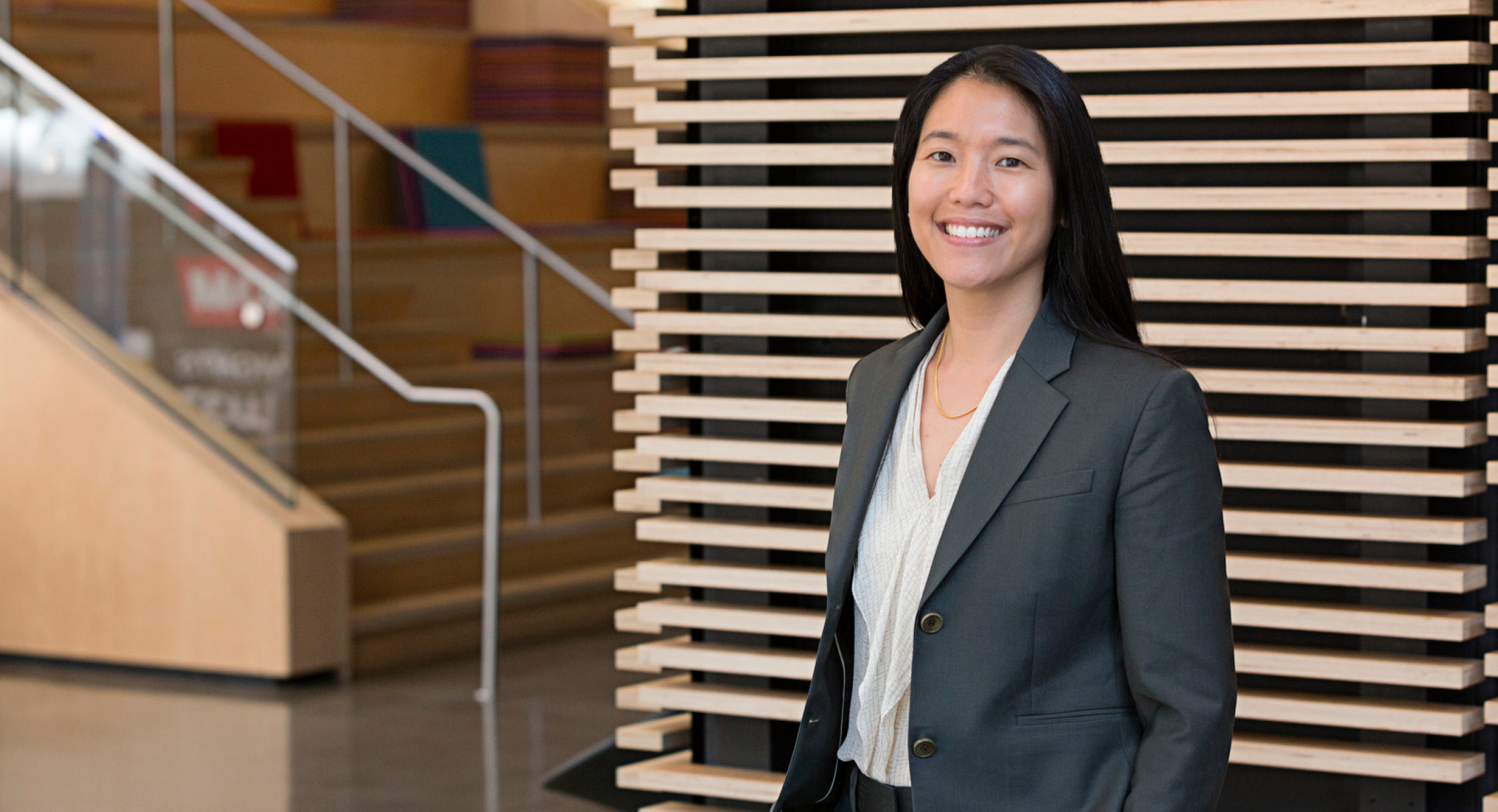
Designer Profile: Julie Hiromoto, AIA Young Architect Award Winner
HKS designer Julie Hiromoto’s passion for architecture sparked almost 30 years ago when her South Georgia middle school teacher introduced her to drafting and model making. However, Julie’s path to winning a prestigious 2019 Young Architect Award from the American Institute of Architects (AIA) started with her upbringing and diverse life experiences that form the foundation of her career.
Her father, Jesus, is of Japanese descent but was born and raised in Peru. The oldest of nine children, he studied medicine and immigrated to the U.S. with $100 in his pocket and began his residency training. He met his future wife at a Florida hospital.
Julie’s mother, Rosa, was the daughter of a Chinese colonel, a man of means until Julie’s grandparents fled the country with their young family during the Communist Revolution. After studying political science in Taiwan, Rosa followed her eldest sister to the U.S., also with around $100 in savings.
“Although my mother’s family had money, they left China with only what they could carry,” says Julie, a Principal and Director of Integration for HKS. “My parents grew up without the advantages they worked so hard to provide for me and my brother, and their sacrifices motivate me every day.”
Together, Rosa and Jesus raised their family in Valdosta, Georgia, and taught Julie to make the most of every chance by taking responsibility and being resilient. Since her early exposure to architecture, Julie discovered ways to seize opportunities with confidence, vigor and grace, or adapt and make new inroads where necessary.

That has led to her becoming a recognized advocate for equity, diversity and inclusion, and a champion for social and environmentally responsible design. Since she joined HKS three years ago, Julie has continued to share these passions with the emerging professionals she coaches, as well as her seasoned colleagues.
She understands how critical these goals are to the industry, and to this end Julie works with HKS’ Better Together diversity initiative and is an ambassador for The Living Future Institute. She also helped establish the curriculum of the sustainable development certificate at New York University and taught as an adjunct professor at the Schack Institute of Real Estate.
“Julie’s creative insights and critical thinking have assisted in the creation and development of Better Together,” says Ann Noble, co-founder of the HKS initiative. “She is truly about making this an empowering workplace where individuals of any background, ethnicity or gender can thrive.”
Throughout her career, Julie has received invaluable advice and mentorship from many industry leaders. Julie began to mirror their behavior, but something was missing.
“I realized that adopting their styles wholesale wasn’t working for me,” Julie says. “I look young and I’m barely over five feet tall, and the way the same words were perceived coming out of my mouth and theirs was very different. I needed my own personal leadership style and a voice that was authentically mine, although you can still see their influence.”
Julie reached back to her father’s culture for help. Before starting an architectural graduate program at Columbia University, she moved to the small Japanese town of Taki in Mie Prefecture for two years. This experience taught her to respect other perspectives.
Raised to be a proactive problem-solver, her outspoken nature created challenges as she stumbled through Japan’s subtler, yet protocol heavy, societal norms. Instead of being perceived as an enthusiastic college graduate eager to make an impact, she was mistakenly perceived as impatient, insubordinate and disrespectful in this context.
“I went into this alien culture and thought I knew what was right,” Julie says. “Although this was a very challenging part of my life to navigate, it’s been such an incredible asset to my career.”
Julie learned to adapt her behavior by combining the Japanese philosophies of wa, harmoniously going with the flow of things, and the martial art aikido, which teaches fighters how to redirect and channel the energy of much larger, powerful foes.
“Flexibility and empathy go a long way,” Julie says. “You don’t have to rewrite your DNA for every context you’re in, but finding common ground sure makes it a lot easier to be heard and build consensus.”
Julie’s nearly 20 years of professional design experience and nuanced decision making, informed by her cultural background and experiences, has been dedicated to her clients and the communities they serve. To date, her work includes more than 50 lectures and presentations, more than 30 publications and more than 35 awards.
That includes this year’s AIA Young Architect Award that honors designers who have shown exceptional leadership and made significant contributions to the architecture profession within the first 10 years of licensure. In addition, Julie has held leadership positions on national AIA committees, the Large Firm Roundtable and other industry-related organizations. She is also a member of the AIA College of Fellows, one of the industry’s highest honors.
“You might not immediately see the connection between an opportunity and your goal,” Julie says. “But if you dive in, commit to it and love what you do, wonderful things can happen. That’s the story of my life and career.”